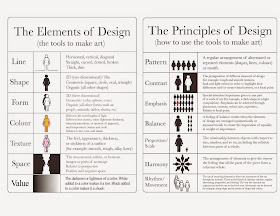 |
| Source: ASIDE, 2014 |
Many current initiatives, such as blended learning, genius hour, and flipped instruction, are all embracing the same potential of disrupted education. They all recognize the multi-latticed, pan-directional nature of contemporary learning. In essence, they are trying to make class time less like class time. We call this the "unclass."
Learning no longer begins and ends at the school bell. Students don’t switch off their devices and their senses of wonder just because the final period clocks out. Even though children have always pursued hobbies and outside interests, today they can network their school inquiries with their personal passions and continue their threads of discovery any time, any where. Learning becomes more like free time and free time more like learning.
Just like adults who juggle smartphones and information streams, kids today reach for a variety of sources to satisfy their natural curiosities. Schools that try to stifle this octopus impulse can run the risk of becoming irrelevant to contemporary learners.
 |
| Source: ASIDE, 2014 |
Recently, we have initiated the “unclass” philosophy to change our prevailing stencil of in-school activity. Rather than falling back on the typical model of teacher instruction and student compliance, the unclass approach imagines a classroom as neighborhoods of self-directed learning. It encourages imagination and skills through social media, backchannels, and self-publishing. Just as companies embrace flexible workspaces and educators flock to “unconferences,” teachers, too, can cultivate student dialogue and self-direction that can be continued at home at the end of the day.
The unclass approach is both a structure and a practice. It offers a strategy for running an organic environment in which children have ownership over their own time. It also still achieves the desired goals of learning and skill acquisition – such as linking the controversies of the Reconstruction Era to America’s racial climate today, or making the scientific method actionable in a digital, non-tinkering world.
The unclass philosophy also emphasizes a mindset. This outlook recognizes that students and teachers can engage in meaningful collaboration well after a 40-minute period has ended. In fact, only a few key questions can be addressed during a day's limited course time. The ramifications of these inquiries, though, can echo later into living rooms, ballparks, and backseats via social media and digital devices. Creative apps and self-directed technology mean that learning occurs via an unclass, with enlightenment an exuberant affirmation of student passion and teacher inspiration.
In his terrific book,
World Class Learners: Educating Creative and Entrepreneurial Students (Corwin, 2012),
Yong Zhao talks about the "grammar of schooling," which refers to the organization of class time and rosters into periods, sections, grades, and subjects
(180). He points out the "inherent logical contradiction" in trying to instill student
innovation and initiative within this type of structured, one-size-fits-all curriculum
(94).
In fact,
Zhao quotes Professor Kyung Hee Kim in the observation that while "teachers claim to value creativity in children," they often squelch "creative behaviors," because they are non-conformist and hard to wrangle (14).
Zhao argues that transferring the responsibility to the learner emphasizes engagement, accountability, and relevance for all students (171).
Extrapolating from Zhao's thought-provoking work, teachers in an unclass find that their "primary responsibilities have shifted from instilling the prescribed content in students following well-established procedures in a structured fashion to developing an educational environment that affords children the opportunity to live a meaningful and engaging educational life" (176).
For more ideas about the unclass movement, we recommend "
The EdCamp Mindset - How An 'Unconference' Can Yield An 'Unclass.'"













